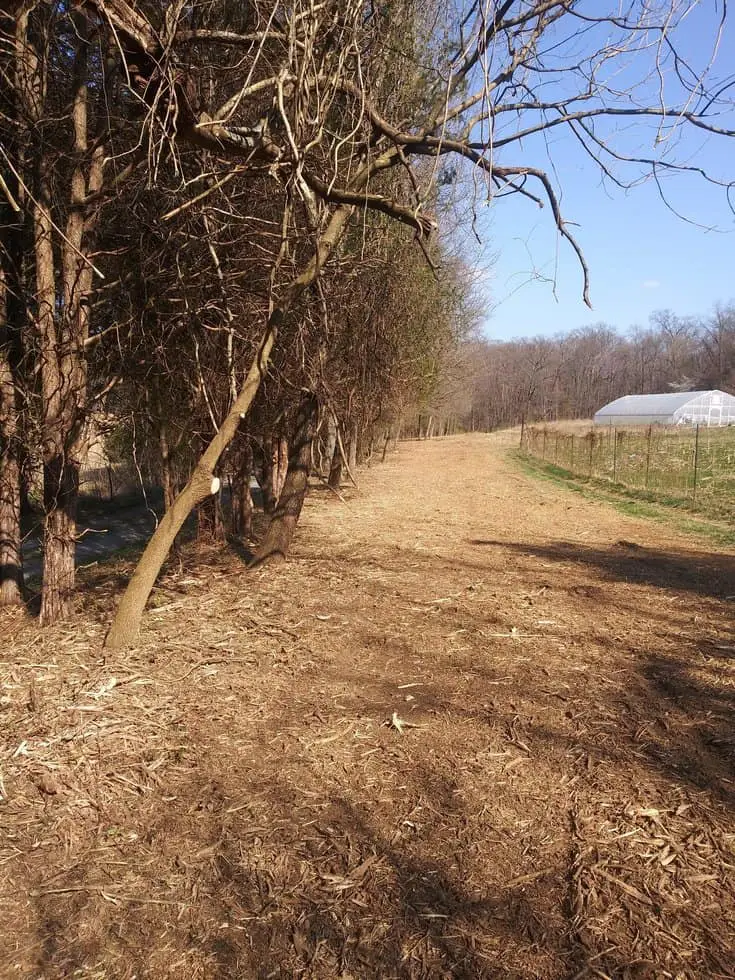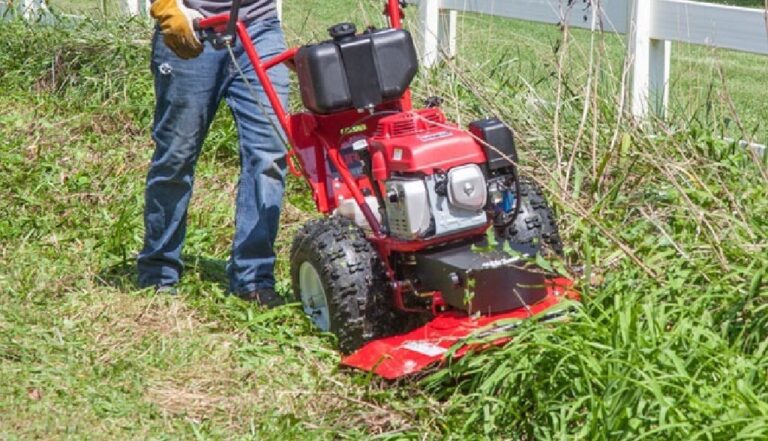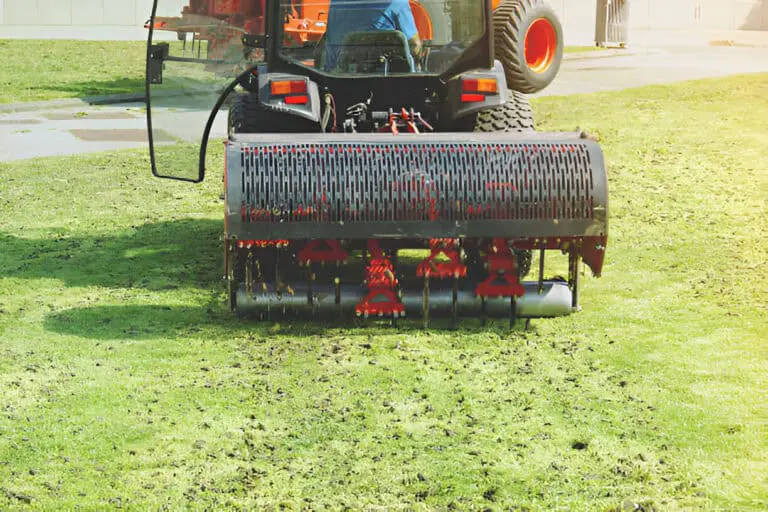Is Forestry Mulching a Good Profitable Business? (Business Plan & Cost)
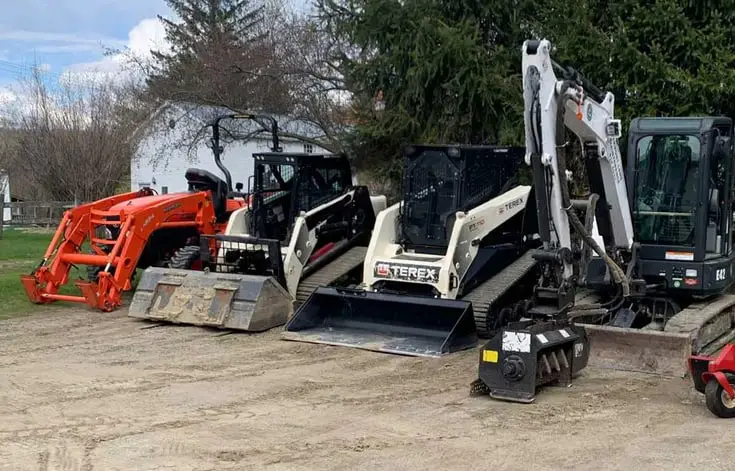
There are several reasons why someone might want to start a forestry mulching business. One reason is that there is a growing demand for mulch from homeowners, landscapers, and gardeners. The equipment needed to start a forestry mulching business is expensive, but once it is purchased, the profits can be high.
Another benefit of starting a forestry mulching business is that it’s a great way to help the environment. Forestry mulching helps control tree diseases, creates wildlife habitats, and improves soil health.
Yes, forestry mulching is a good, profitable business if done right. So if you are looking for a business that is both lucrative and eco-friendly, look no further than forestry mulching.
Is Forestry Mulching Better Than Traditional Land Clearing Methods?
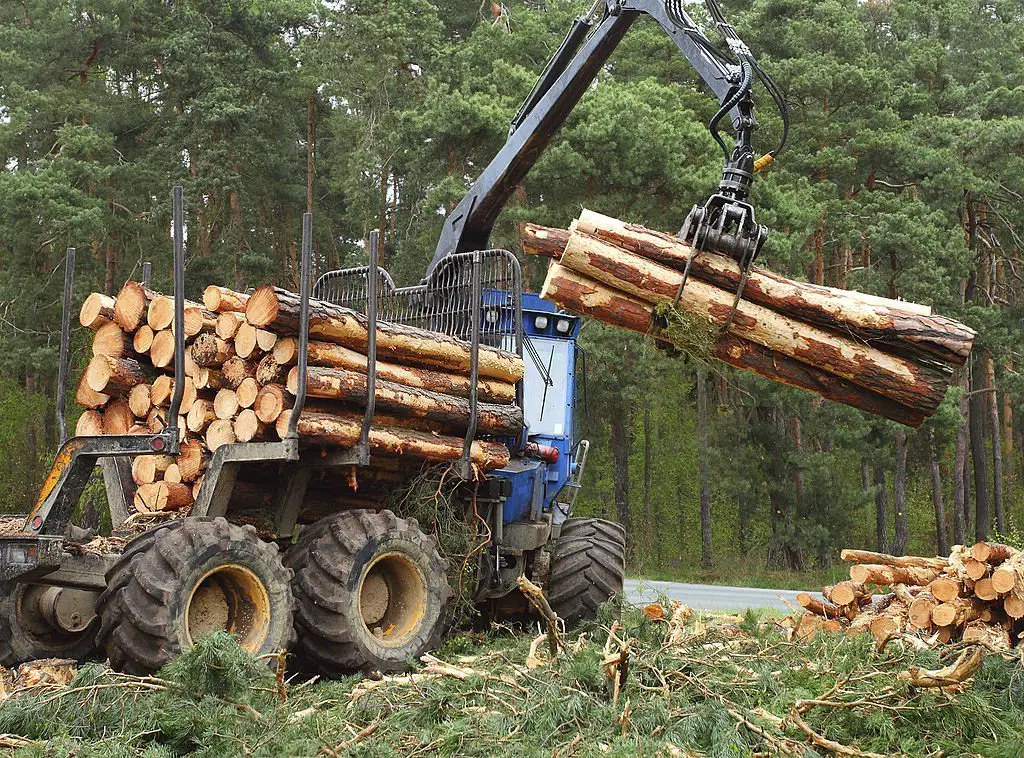
Forestry mulching is the process of using a machine that cuts and grinds up trees and other vegetation into small pieces and then blows them onto the ground. This is different from traditional land clearing methods. They involve chopping down trees, then burning or bulldozing the debris.
So, which is better: forestry mulching or traditional land clearing? Considering the benefits of forestry mulching, many find it to be a more advantageous option.
Forestry mulching has become the quickest, simplest, and most cost-effective method of clearing the land. By employing forestry mulching, you preserve the soil condition by not removing all the tree’s roots.
It greatly decreases the risk of soil erosion and impacts on the environment. It does this by mulching trees and vegetation and keeping the root system and soil intact.
This is critical since the soil serves as the basis for any work you undertake on the site, including constructing, seeding, and planting.
The mulched material can be kept on the ground to act as an erosion barrier while decomposing and returning nutrients to the soil.
Many other phases of land clearing, such as site preparation, cutting/felling/hauling, and clean up after a forestry mulching project, are also eliminated using this method. Forestry mulching minimizes emissions and costs for consumers by eliminating the need for other heavy-duty machinery.
Overall, forestry mulching outperforms conventional land clearing. It helps the environment while also saving money and time for the consumer.
Is Forestry Mulching a Good Business?
When it comes to forestry mulching, there are a lot of people who are still on the fence about whether it is a good business. The fact of the matter is, that forestry mulching can be a great business if you know what you’re doing.
There are a few things that you need to keep in mind if you want to start a forestry mulching business and make it successful.
The first thing that you need to do is find a good location for your business. You’ll want to find a place that has plenty of trees that need to be mulched. You’ll also want to find a place close to where your customers are located.
The next thing is getting the right equipment for the job. For a normal task for daily operation, you’ll need a mulcher.
Mulcher is required for the basic setup operation of the forestry mulching task. Mulchers are the machines used by forestry mulching businesses to clean land. Some mulchers, such as grass mulchers, are classified as garden and yard clearing equipment because they are smaller.
A Hidraulic Forestry mulcher is expensive, but once it is purchased, the profits can be high due to the benefits of forestry mulching. On the other hand, are high-capacity machines used to clear big areas of land, construction sites, and areas with dense brush and heavy vegetation.
A good mulching operation will also need a good truck with hydraulic capabilities for towing heavy equipment like forestry mulchers. Make sure that you keep your heavy equipment, like the forestry mulcher, in good shape so that you can take it to your customers and have them pay for their services at a competitive cost per hour.
You can also invest in a trailer that’s used for mulching materials. This is another way to make money mulching. It is especially useful for forestry mulching projects with an hourly pay structure. The trailer needs to be a small one between 12 and 20 feet long to transport forestry mulcher equipment efficiently. It will cost from $1,000 to $3,000 for this type of trailer.
You’ll have to invest in a mower for the trailer as well. Some of these options will require you to invest in a trailer, mower, and mulching equipment. This can be an expensive venture if you want to make money mulching.
Be careful. Mulching could cost you more than you earn. But with forestry mulching, you don’t have to worry as much. It’s due to the high demand and benefits. Once you learn to mulch your own plants, then you’ll be able to make money mulching.
It goes without saying that the profitability of a land clearing or forestry mulching or business is determined by a number of things. They include the work you’ve booked, the prices you’re charging, and any overhead costs you must manage. However, with the correct tools, you can increase your production and profitability.
| Related: Pros and Cons of Forestry Mulching: Is Forestry Mulching Worth It? |
What Type of Forest Mulching Machines Are Required?
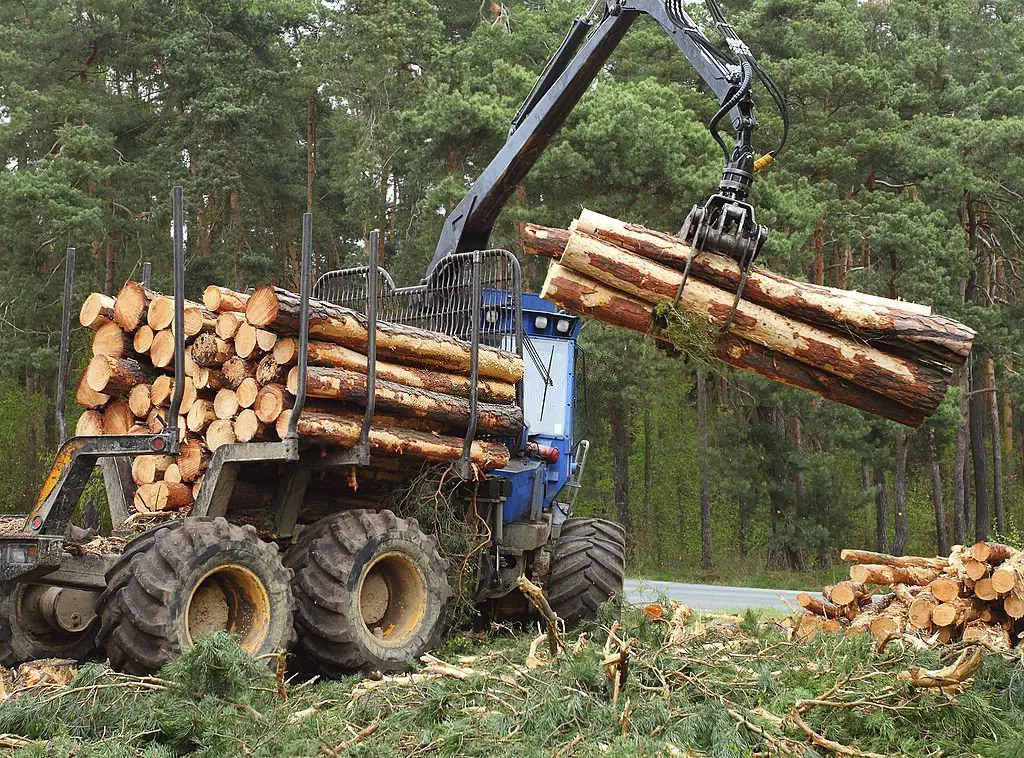
Mulching machines are important tools for forestry because they help to reduce the amount of time it takes to clear a forest area.
There are many types of machines to choose from depending on your need. Forestry mulching uses one popular kind of equipment. It is called a forestry mulcher. They are key for handling wood debris well. The main function of the machine is to slice and grind vegetation, leaving small particles as mulch on the ground.
Forest mulching machines have a rotary drum, equipped with steel teeth or blades that spit out the vegetation. The machines are mulching attachments on application-specific tractors.
Forestry mulching devices that use a skid steer or bobcat are the most commonly used. It’s a compact construction vehicle with multiple functions. It has tracks on both sides that are locked and worked on both sides in time, utilizing hydraulics for enhanced operation. Because each side has its own engine, you must steer each side separately.
Mulching attachments for skid steers come in two forms.
Mulchers with a drum.
They provide high-quality mulching services. These tracked mulching machines can grind below ground level and remove stumps. Drum mulchers produce a fine mulch that can be sold or used as an erosion barrier if left on the ground. Because the connection is usually broad, they can handle trees and vegetation in one go. Smooth, paddle, and depth control are the three varieties of drum mulching heads. The most common are smooth drum mulchers.
Mulchers with discs.
They’re perfect for removing dense, undesirable vegetation. They work more quickly than drum mulchers. Furthermore, they ground stumps as well as drum mulchers, but not as finely. With a disc mulching head, however, the cut and feed procedure is faster. As a result, if you have a vast area with a lot of vegetation, a disc-style forest mulching machine is the best option. The mulch left on the ground by a disc mulcher will still act as an erosion barrier.
The sort of forest mulching equipment you choose is significantly dependent on the forest’s vegetation and terrain. It’s worth noting that mulchers can’t handle rocks or boulders. The teeth of the mulcher will be damaged if stones and boulders are ground.
What Size Skid Steer Do I Need for a Mulcher?
Many manufacturers offer the best of both worlds with mulcher attachments. They allow for seamless integration and performance with smaller skid steers.
It is, however, possible to have electricity in a small footprint. In general, we recommend that your mulcher be powered by a skid steer with at least 60 horsepower.
When it comes to mulcher attachments, many manufacturers offer the best of both worlds, allowing for seamless integration and performance with smaller skid steers. This type of adaptable machinery allows companies in the forestry and landscaping industries to stay flexible while equipping their skid steers with the proper tools to get the job done right, all while increasing productivity.
What Is the Best Skid Steer for Mulching?
The finest skid steer for mulching, in general, is the one that best suits your personal tastes and on-site efficiency. While it may sound like a broad answer, you can’t overestimate the importance of finding the correct skid steer for your needs.
Some skid steer manufacturers are clearly superior to others. In recent decades, no name has become more synonymous with skid steers than Bobcat. The company is reputable. They have a large choice of skid steers to pick from. You can find one that meets your demands and works with the accessories you want to use.
The S650 skid steer loader, which has a vertical lift path and is suitable for loading and handling duties, is one of our favorites. It may also accommodate a variety of accessories, including mulchers.
Above all, it has a small footprint that makes it simple to maneuver through tight areas. With the Bobcat brand’s dependability and quality, you can’t go wrong with the versatile S650 for your mulching (and other) needs.
How Much Does Forestry Mulching Cost per Acre?
The price is determined by a number of factors. To begin with, you must determine how much land you need to clear for the forestry mulching project. You must also take into consideration the soil’s condition and complexity. Please note that forestry mulching jobs also depend on the vegetation density on the site.
Finally, the overall cost is determined by the forestry mulching service your clients want.
In general, forest mulching costs $400 per acre on average. Depending on the size of the land, vegetation density, and company prices, this price could be greater or cheaper.
Many clients spend $1,500 to $6,700 to remove land for new construction. This is still less than traditional land clearing.
The best way to make money when you’re mulching is to charge a flat rate for the service. You can also offer discounts for larger jobs, emphasizing the average cost savings of forestry mulching. The more time that you spend mulching, the less likely it is that you’ll be able to charge a flat rate.
If you’re willing to invest in some equipment, then you can charge a fee per cubic yard of mulch. As an example, a mulching mower will cost between $500 and $1,000.
By following the number above for charging your client, you don’t wait too long for your forestry mulching to be profitable.
Who Benefits From Forestry Mulching?
Forestry mulching helps other land developments and environmental parties. It also clears farmlands, backyards, gardens, and private areas. Other projects can benefit from forestry mulching in the following ways.
Commercial And Public Land Clearing
Mulching is becoming more popular in public, commercial, and residential land clearing projects. These include construction site prep, path installation, and seismic research.
It’s a popular choice for clearing right-of-ways, road and highway maintenance, pipelines, and utility lines. All of which require the thorough removal of all standing vegetation.
Wetlands And Riverbank Ecology (Riparian Zone) Habitat Conservation
It is environmentally friendly. Many groups like landowners, nonprofits, hunting clubs, and government agencies are adopting the forestry mulching method. They use it to protect the habitat for pheasants, doves, elk, deer, and other animals.
Animal Welfare
Mulching also aids in the control of forest vegetation growth in accordance with the needs of the local animal species. It ensures the well-being of wildlife in the following ways.
Food. Mulchers and mowers used in forestry clear underbrush and invasive species such as buckthorn and multiflora rose. This promotes the growth of grasses and other food sources for herbivores.
Water. When water sources become blocked owing to overgrowth of trees, animals may be unable to access them. Mulchers and tree shears can be used to help them regain access to water.
Shelter. They rely on specific grasses. These grasses provide habitat, refuge, and breeding. They also provide protection from high temperatures.
Invasive Species Control
Invasive plants and insects can have a negative impact on the natural ecology. Invasive plant species can quickly grow throughout a region and absorb a lot of groundwater. The water table is preserved by removing these plants. Tamarisk, also called salt cedar, and pinyon-juniper (PJ) are some of the most frequent invasive plant species. The list also includes Russian olive, Juniperus virginiana, buckthorn, and multiflora rose.
Invasive insects such as pine beetles can wreak havoc on forests, leaving behind dying trees with no value as timber. If these dying trees lose their ability to withstand the wind, they constitute a hazard. Overcrowding stress is reduced by proactive mulching, which improves trees’ natural defenses against these destructive species.
Mulching helps to keep invasive plants, insects, and fungi at bay. The discharged material that remains after mulching settles in a relatively small area. This is the opposite of rotary cutters. They spread pine beetles and other invasive species into nearby healthy trees.
Wildfire Prevention And Management
Wildfire risk is reduced through proactive mulching. Small leafy plants, fallen or decaying trees, and other fuel sources that could ignite wildfires are removed. Reactive mulching, sometimes known as fire breaks, is the reactive cutting of lines on active fires and can be used to control wildfires.
Various Services Provided by Forestry Mulching Companies
Forest mulching firms offer a variety of land clearance services. Even the hardest clearings may be done in less time. They take fewer people and cost less per acre with the right contractor. Forestry mulching businesses offer a variety of services, including:
- Pasture Reclamation
- Lot Clearing
- Lot Beautification
- Tree Pruning
- Clearing and Grubbing Underbrush
- Clearing Overgrowth
- Fence Line Clearing
- Home Site Clearing
- Right-of-Way Clearing
- Tree cutting
- Access Roads for Hunting
- Clearing the Ditch
- Clearing Trails and Roads
- Fire Breaks
- Brush Mowing
- Utility Easements Clearing
- Stump Removal
- Real Estate Thinning
Creating a Good Forestry Mulching Company Business Plan
The objective, goals, and strategic vision of your forestry mulching business are all outlined in a business plan. So when starting a forestry mulching, you better make a proper business plan for a forestry mulching company.
There are a number of different ways to go about starting a forestry mulching company, and understanding the cost per hour can be a good place to start. The most important thing is to have a well-developed business plan with a detailed marketing strategy. It is also critical to have a good understanding of the equipment that will be used in the business and how it will be operated.
A key part of any successful forestry mulching company is strong customer relations. You must build relationships with local landowners, government agencies, and other businesses. They may need forestry mulching services.
It is also important to develop a solid supply chain that can provide the equipment, staff, and materials needed to run a successful business.
There are a number of different ways to go about starting a forestry mulching company. A good starting point is to look for a local business that can supply the equipment, staff, and materials needed to run a successful business.
Start with one or two pieces of equipment and see how it goes before considering expanding. Market research and exposure are also important to take note of. Listing your business on social media, such as Facebook and LinkedIn, can help you get the word out to potential customers./
You should educate yourself on how to draft the market analysis portion of a business plan for accuracy’s sake. It involves finding your target market. In many cases, it also involves supporting research. This research backs up your claims and sales projections.
Evaluate the Competition in Forestry Mulching Business
There are many types of business competition in the forestry mulching industry. The most common type of business competition is between companies that offer the same services.
For example, two companies may offer to clear land by using forestry mulching methods. In this competition, the companies may try to get more business. They can do this by offering lower prices or by providing better services.
Another type of business competition is between companies that offer different services. For example, one company may offer to clear land using forestry mulching. Another company may offer to sell trees for landscaping.
In this competition, the companies may compete by trying to get more business. They can do this by offering lower prices or by providing better services.
It’s a good idea to figure out how you’ll fit into the competitive landscape long before you launch a mulch business in your neighborhood. To find a list of local rivals near you, click the link below. Simply input your city, state, and zip code to find mulch companies in your area.
If there is too much competition, it could be better to establish the company in a less competitive market.
Final Thought
In conclusion, forestry mulching can be a profitable business if it is done correctly. It can be done on a small or large scale, and there’s always work to be found in this industry. The best part is that it’s relatively easy to get started, and you don’t need a lot of capital investment.
Starting a forestry mulching business involves many things to think about. These include the space you have to operate, the equipment you need, and the work you are willing to do. If you are prepared to start a forestry mulching business, do your research and take the time to plan your operation, you can be successful in this field.
FAQs
What are the ongoing costs of running a forestry mulching business?
Ongoing costs include fuel, maintenance, equipment financing, insurance, labor, and marketing. They add up to about $5,000 to $15,000 per month.
What is the average profit margin for a forestry mulching business?
Profit margins can vary widely but typically range from 20% to 50% after accounting for expenses.
How can I create a business plan for a forestry mulching business?
A business plan should include a market analysis. It should also include costs for equipment and operations, a pricing strategy, a marketing plan, and financial projections.
Are there financing options available for starting a forestry mulching business?
Yes, options include loans, grants, and partnerships. They help cover startup costs.

